- Home
- J. G. Ballard
Running Wild
Running Wild Read online
The author and publisher have provided this e-book to you for your personal use only. You may not make this e-book publicly available in any way. Copyright infringement is against the law. If you believe the copy of this e-book you are reading infringes on the author’s copyright, please notify the publisher at: us.macmillanusa.com/piracy.
Contents
Title Page
Copyright Notice
From the Forensic Diaries of Dr. Richard Greville, Deputy Psychiatric Adviser, Metropolitan Police
Postscript, December 8, 1993
By the Same Author
Copyright
FROM THE FORENSIC DIARIES OF DR. RICHARD GREVILLE, DEPUTY PSYCHIATRIC ADVISER, METROPOLITAN POLICE
August 25, 1988. Where to start? So much has been written about the Pangbourne Massacre, as it is now known in the popular press throughout the world, that I find it difficult to see this tragic event with a clear eye. In the past two months there have been so many television programs about the thirty-two murdered residents of this exclusive estate to the west of London, and so much speculation about the abduction of their thirteen children, that there scarcely seems room for even a single fresh hypothesis.
However, as the Permanent Secretary impressed upon me at the Home Office this morning, virtually nothing is known about the motives and identity of the assassins.
“I say ‘assassins,’ Doctor Greville, but there may have been only one of them. I’m told that some sort of martial arts fanatic could have got away with it.” Sitting beneath the portrait of his more illustrious predecessor, he gestured gloomily. “And as for the whereabouts of the orphaned children—they’ve vanished through some window in time and space. Not a ransom demand, or even a simple threat to kill them…”
He sounded almost aggrieved, and I commented: “All the same, I think we should assume that they’re still alive.”
“Should we? To be honest, Doctor, I’d rather you didn’t assume anything. That’s why I’ve asked you here.”
He stared at me without hope, already regretting the decision. As we both well knew, the fact that I had been called in by the Home Office, after my unpopular minority report on the Hungerford killings, was less a compliment to me than a comment on the failure of the police, the CID and the intelligence services to come up with even a solitary clue to the sources of this horrific crime.
As baffled as the Permanent Secretary, I could only think of asking his permission to visit the murder site at Pangbourne Village. The luxury housing estate was still sealed off from the press and public, but had been tramped over by an army of heavy-footed investigators. I waited as he scribbled my laissez-passer, my arms burdened by two Home Office briefcases loaded with their probably useless files. Then I remembered the comfortable seats of the viewing theater in the Whitehall basement, and as an afterthought asked if I could see the police video recorded at Pangbourne within a few hours of the crime.
“The police video? All right, but it’s pretty grim stuff. Though after Hungerford, I daresay you have the stomach for this sort of thing, Doctor…”
Irritated by his tone, I almost declined. The senior people at both the Home Office and Scotland Yard regarded me as a dangerous maverick, overly prone to lateral thinking and liable to come up with one embarrassing discovery after another. Later, looking back as I revise these diaries for publication, I realize that it was there, in the deserted viewing theater, that I was given my first glimpse into the real causes of the Pangbourne Massacre. If I failed to recognize what I saw, and if over the course of my investigation I seem unduly slow to identify the culprits, I can only plead that what now appears self-evident scarcely seemed so at the time. My failure to recognize the obvious, in common with almost everyone else concerned, is a measure of the true mystery of the Pangbourne Massacre.
The Police Video
Like millions of other television viewers, I had already seen selected extracts from the film in numerous documentaries about the massacre, and I hardly expected any sudden revelation. But as I relaxed in the viewing theater, I soon realized what a remarkable film this was, and how well it conveyed the curious atmosphere of Pangbourne Village—in its elegant and civilized way a scene-of-the-crime waiting for its murder.
The twenty-eight-minute film was taken by officers of Reading CID soon after eleven o’clock on the morning of June 25, 1988, some three hours after the murders. Thankfully, there is no sound track, and one is glad that none is necessary, unlike the TV programs with their hectoring commentaries full of lurid speculation. This minimalist style of camera work exactly suits the subject matter, the shadowless summer sunlight and the almost blank façades of the expensive houses—everything is strangely blanched, drained of all emotion, and one seems to be visiting a set of laboratories in a high-tech science park where no human operatives are employed.
The film opens by the gatehouse that controlled access to the ten mansions, the recreation club and gymnasium which made up the estate. The medallion of the private security firm is visible beside the visitors’ microphone, but there is no sign of the uniformed security guard who usually sat at the window.
The camera turns to show the delivery van of the local wine merchants which the police have parked among the ornamental trees on the grass verge. The driver, a pallid young man in his early twenties, is staring in a despondent way at the deep ruts left in the finely trimmed grass, as if the costs of restoring this once-immaculate surface will have to be met from his wages. It was he who gave the alarm, after discovering the first of the bodies as he delivered a case of white burgundy to the Garfield house (No. 3, The Avenue).
The camera fixes on him, and like a badly trained actor he steps forward to the gatehouse, a tic jumping across his sallow cheek. He points to the door, and a uniformed constable opens the armored glass panel to reveal the interior of the office.
A security guard is lying on the floor below the row of television monitors, their screens a blizzard of snow. Someone has cut the cable running from the surveillance cameras mounted all over the estate, but clearly Officer Turner had no time to reach for the telephone whose scissored cord hangs from the desk above his head. Arms pinioned, he lies within a bizarre contraption of rope and bamboo sticks, his neck gripped by a pair of spring-loaded steel calipers, as if in his bored moments he had been constructing a box kite for one of the pampered children of the estate and had been trapped inside it.
In fact, as I can see from the livid contusions on his throat, he has strangled himself after blundering into this lethal cat’s cradle which his murderer dropped over his shoulders, its double nooses tightening around his neck as he struggled to free his arms and legs.
The camera leaves the gatehouse and sets off along The Avenue, the tree-lined central drive of the estate. The handsome mansions sit above their ample front lawns, separated from each other by screens of ornamental shrubs and dry-stone walls. The light is flat but remarkably even, a consequence of the generous zoning densities (approx. two acres per house) and the absence of those cheap silver firs which cast their bleak shadows across the mock-Tudor façades of so many executive estates in the Thames Valley.
As well, though, there is an antiseptic quality about Pangbourne Village, as if these company directors, financiers and television tycoons have succeeded in ridding their private Parnassus of every strain of dirt and untidiness. Here, even the drifting leaves look as if they have too much freedom. Thirteen children once lived in these houses, but it is hard to visualize them at play.
For once, unhappily, the pale green slopes of Parnassus are marked with a darker dye. The police camera turns to examine the Garfield family’s Mercedes in the driveway of No. 3. Roger Garfield, a merchant banker in his mid-fifties, sits in the rear seat, head leaning against the off-side
stereo speaker as if to catch some fleeting grace note. He is a large-chested man with a well-lunched midriff and strong legs that have spent agonizing hours on an exercise cycle. He has been shot twice through the chest with a small-caliber handgun. Almost as surprising, he is wearing no trousers, and bloodstained footprints emerging from the house indicate that he was shot while dressing after his morning shower. He somehow managed to walk downstairs and take refuge in his car. Perhaps his clouding mind still assumed that he would be driven to his office in the City of London.
But the Mercedes was going nowhere. Garfield’s chauffeur had been shot dead a few moments after his employer. A white-haired man in a black uniform, Mr. Poole lies face down in the bed of orange-tipped cannas beside the front door, cap still held in his right hand.
The camera pauses over him and then enters the house, following the bloody footprints through the open door. Garfield and his wife had made numerous trips to Hong Kong, and the rooms are filled with pieces of chinoiserie—large porcelain vases stand on the blackwood furniture, and there are pairs of Ming horses and jade figurines. Surprisingly, none have been disturbed, suggesting that the murderers had approached their victims without surprise. The housekeeper, Mrs. West, lies shot below the marble mantelpiece in the drawing room, interrupted while doing her dusting. In an upstairs bathroom the camera finds Mrs. Garfield, a handsome woman in her late forties, slumped against the glass door of the shower stall, her yellow toothbrush still in her hand.
All trace of the Garfields’ sixteen-year-old son, Alexander, had vanished. His bedroom, study and bathroom were undisturbed. Only in his mother’s blood flowing across the bathroom tiles could be seen the smeared prints of Alexander’s rubber-cleated shoes, left behind as he was seized and swept away by his abductors.
The police video continues on its grim and matter-of-fact way. The camera leaves Garfield seated in his Mercedes and gazes across the tranquil lawns at the next macabre tableau. As the two constables outside the Reade house (No. 1, The Avenue) step back from the colonnaded porch, the camera reveals the lavish interior of the property tycoon’s home, so filled with French furniture and objets d’art that it resembles one of the larger rooms at the Wallace Collection. Yet not a glass cabinet has been rifled, not a Sevres plate shattered, not an ormolu clock toppled from its pedestal.
Indeed, Mr. and Mrs. Reade sit at their breakfast table in the dining room, lying back in their chairs at opposite ends of the lacquered oblong as if momentarily overwhelmed by the calm and richness of the life they have arranged for themselves. Both have been efficiently shot by assailants who have crept so close to them that the cutlery beside their napkins is undisturbed. Only the place settings of the Reades’ daughters, Annabel and Gail, have been scattered to the floor as these orphaned children made a desperate attempt to resist their kidnappers.
The camera resumes its melancholy tour. By the time it reaches the third house, the Gropius-inspired home of a distinguished concert pianist, the sequence of entrances, deaths and exits begins to resemble a nightmare exhibition that will never end. House by house, the assassins had moved swiftly through the estate on that quiet June morning, killing the owners, their chauffeurs and servants, before abducting the thirteen children. Husbands and wives were shot down across their still-warm beds, stabbed in their shower stalls, electrocuted in their baths or crushed against their garage doors by their own cars. In a period generally agreed to be no more than twenty minutes, some thirty-two people were savagely but efficiently done to death.
However, as the film ended, with a visit to the perimeter guard post where the second security officer had been killed by a single bolt from a crossbow, I was struck by the way in which Pangbourne Village remained aloof from this day of death. The owners of these elegant houses had been dispatched with the least damage to the fabric of their homes, as if the façades of professional and upper-middle-class life were their most solid and lasting substance.
Indifferent to the lives, and deaths, negotiated within its walls, Pangbourne Village would endure. Once the mystery of this mass murder and kidnapping had been solved, a seemingly impossible task with which I had now been charged, a new cast of tenants would soon be recruited to fill these calm drawing rooms. For some reason, as I left the viewing theater and stepped into the traffic-filled clamor of a Whitehall evening, I gave a small shudder for those new arrivals.
Pangbourne Village
Having exhausted my central nervous system with the police video, I returned to my office at the Institute of Psychiatry and tried to calm myself by looking at the origins and creation of Pangbourne Village.
The small Berkshire town of Pangbourne lies five miles to the northwest of Reading and approximately thirty miles to the west of London. Despite its title, the Pangbourne Village estate was not built near the site of any former or existing village. Like the numerous executive housing estates built in the 1980s in areas of deregulated farmland between Reading and the Thames River, Pangbourne Village has no connections, social, historical or civic, with Pangbourne itself.
The chief attraction for Camelot Holdings Ltd, the architects and property developers, was the proximity of the M4 motorway, and the ready access it offers to Heathrow Airport and central London, an ease of access that might well have benefited the assassins and kidnappers. All the residents of Pangbourne Village worked either in central London or in the silicon valley of high-technology computer firms along the M4 corridor. Pangbourne Village is only the newest (completed 1985) and most expensive (the ten houses, all with swimming pools, projection theaters and optional stables, each sold for approx. £590,000) of a number of similar estates in Berkshire which house thousands of senior professionals—lawyers, stockbrokers, bankers—and their families.
Secure behind their high walls and surveillance cameras, these estates in effect constitute a chain of closed communities whose lifelines run directly along the M4 to the offices and consulting rooms, restaurants and private clinics of central London. They remain completely apart from their local communities, except for a small and carefully selected underclass of chauffeurs, housekeepers and gardeners who maintain the estates in their pristine condition. Their children mix only with each other at exclusive fee-paying schools or in the lavishly equipped sports clubs sited on the estates.
Pangbourne Village is remarkable only for having advanced these general trends toward almost total self-sufficiency. The entire estate, covering some thirty-two acres, is ringed by a steel-mesh fence fitted with electrical alarms, and until the tragic murders was regularly patrolled by guard dogs and radio-equipped handlers. Entry to the estate was by appointment only, and the avenues and drives were swept by remote-controlled TV cameras. All police officers concerned in the investigation agree that the penetration of these defenses by a large group of assassins was a remarkable and, as yet, inexplicable event.
The Residents
I turned to the list of victims, going through the detailed dossiers which the Special Branch had compiled, in the hope that the identities of the murdered residents might suggest some elusive clue. The sets of photographs, entries from Who’s Who, the photostats of birth and marriage certificates, share portfolios and bank statements, academic qualifications and honorary degrees passed between my hands, the records of gifted lives so brutally ended.
1 The Avenue. Julian Reade, 43, chairman, Reade Investments. Dr. Miriam Reade, 41, ear, nose and throat specialist, Wimpole Street. Shot.
2 daughters: Annabel, 16, and Gail, 15.
2 The Avenue. Charles Ogilvy, 47, Lloyds underwriter; hon. secretary, Pangbourne Polo Club. Margaret Ogilvy, 42. Shot.
1 son: Jasper, 17.
3 The Avenue. Roger Garfield, 52, merchant banker. Helen Garfield, 47, proprietor, Pedigree Kennels, Windsor. Shot.
1 son: Alexander, 16.
4 The Avenue. David Miller, 49, stockbroker. Elizabeth Miller, 46. Electrocuted.
1 son: Robin, 13. 1 daughter: Marion, 8.
5 The Avenue. Dr. Harold
Maxted, 54, psychiatrist, Harley Street. Dr. Edwina Maxted, 48, psychiatrist, High Street, Kensington. Crushed by car.
1 son: Jeremy, 17.
6 The Avenue. Margot Winterton, 48, concert pianist. Richard Winterton, 57, director, Winterton Arrangements Ltd. Shot.
No children.
1 The Hill. Richard Sterling, 49, chief executive, EduCable, Oxford-area TV franchise. Carole Sterling, 42, former ITN newsreader. Suffocated.
1 son: Roger, 15.
2 The Hill. Andrew Lymington, 38, chairman, Leisure Marine Ltd. Ex-racing driver, 1982 Western Australia powerboat champion. Sheila Lymington, 37, former professional ice-dance skater. Shot.
1 son: Graham, 15. 1 daughter: Amanda, 14.
3 The Hill. Ernest Sanger, 57, chairman, Sanger Finance. Proprietor, Windsor World Theme Park, Slough. Deirdre Sanger, 54, managing director, She-She Fashions, Brent Cross. Shot.
1 son: Mark, 16.
4 The Hill. Graham Zest, 46, chairman, Zest Health Foods. Beverly Zest, 42, company secretary, Zest Health Foods. Shot with crossbow.
1 son: Andrew, 16. 1 daughter: Emma, 15.
The most careful research into the backgrounds of these murdered men and women has failed to reveal any common factor that might prompt a wholesale attack. The responsible character of the parents and the generous quality of family life have been reconstructed from the abundant testimony of those domestic servants who fortunately were absent on June 25 (a Saturday, and their day off for most of the staff). All testify that the murder victims were enlightened and loving parents, who shared liberal and humane values which they displayed almost to a fault. The children attended exclusive private day schools near Reading, and their successful academic records reveal a complete absence of stress in their home lives. The parents (all of whom, untypically for their professional class, seem to have objected to boarding schools) devoted long hours to their offspring, even to the extent of sacrificing their own social lives. They joined the children in various activities at the recreation club, organized discotheques and bridge contests in which they took full part, and in the best sense were guiding their sons and daughters toward fulfilled and happy lives when they themselves were cut down so tragically.

 High-Rise
High-Rise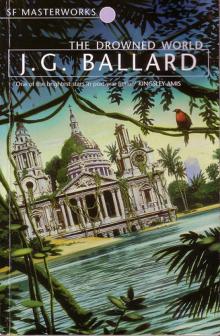 The Drowned World
The Drowned World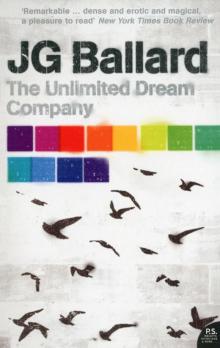 The Unlimited Dream Company
The Unlimited Dream Company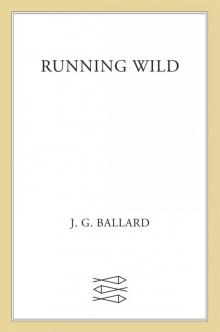 Running Wild
Running Wild The Day of Creation
The Day of Creation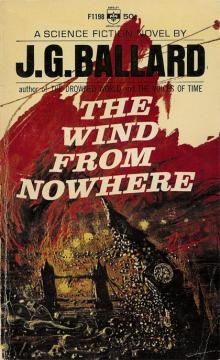 The Wind From Nowhere
The Wind From Nowhere The Complete Short Stories, Volume 2
The Complete Short Stories, Volume 2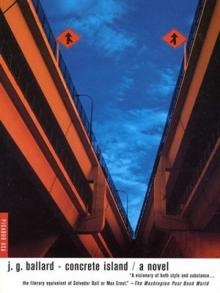 Concrete Island
Concrete Island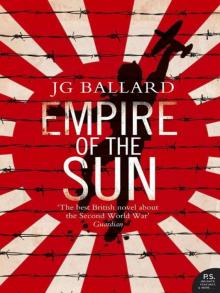 Empire of the Sun
Empire of the Sun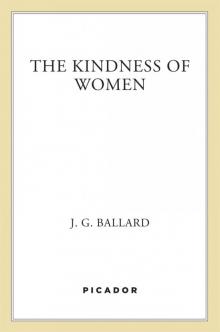 The Kindness of Women
The Kindness of Women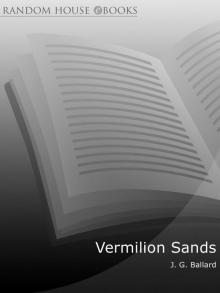 Vermilion Sands
Vermilion Sands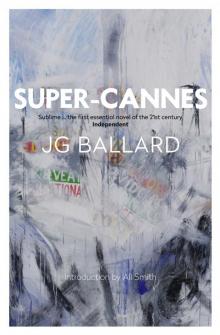 Super-Cannes
Super-Cannes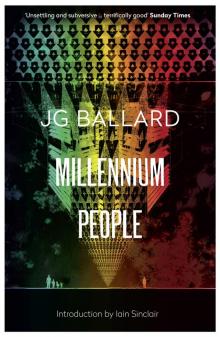 Millennium People
Millennium People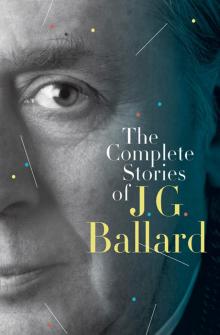 The Complete Stories of J. G. Ballard
The Complete Stories of J. G. Ballard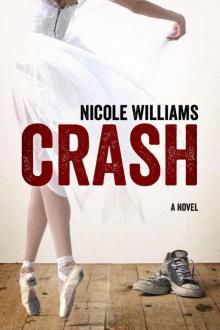 Crash
Crash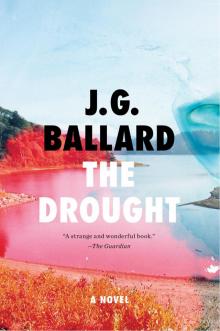 The Drought
The Drought The Atrocity Exhibition
The Atrocity Exhibition The Complete Short Stories: Volume 1
The Complete Short Stories: Volume 1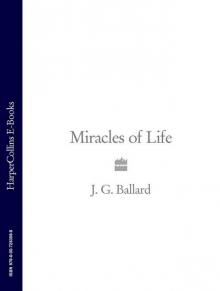 Miracles of Life: Shanghai to Shepperton: An Autobiography
Miracles of Life: Shanghai to Shepperton: An Autobiography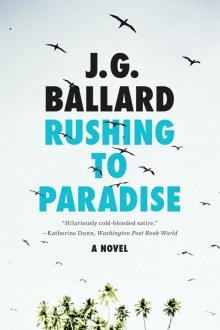 Rushing to Paradise
Rushing to Paradise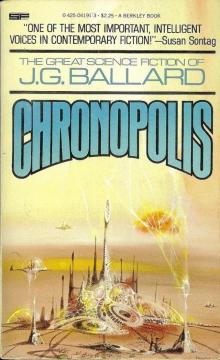 Chronopolis
Chronopolis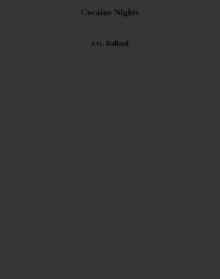 Cocaine Nights
Cocaine Nights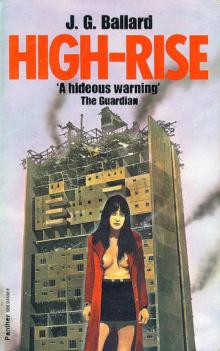 High Rise (1987)
High Rise (1987) The Complete Short Stories
The Complete Short Stories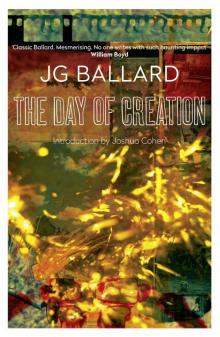 The Day of Creation (Harper Perennial Modern Classics)
The Day of Creation (Harper Perennial Modern Classics)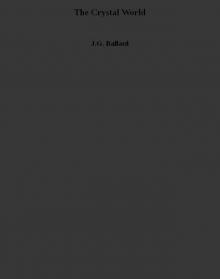 The Crystal World
The Crystal World